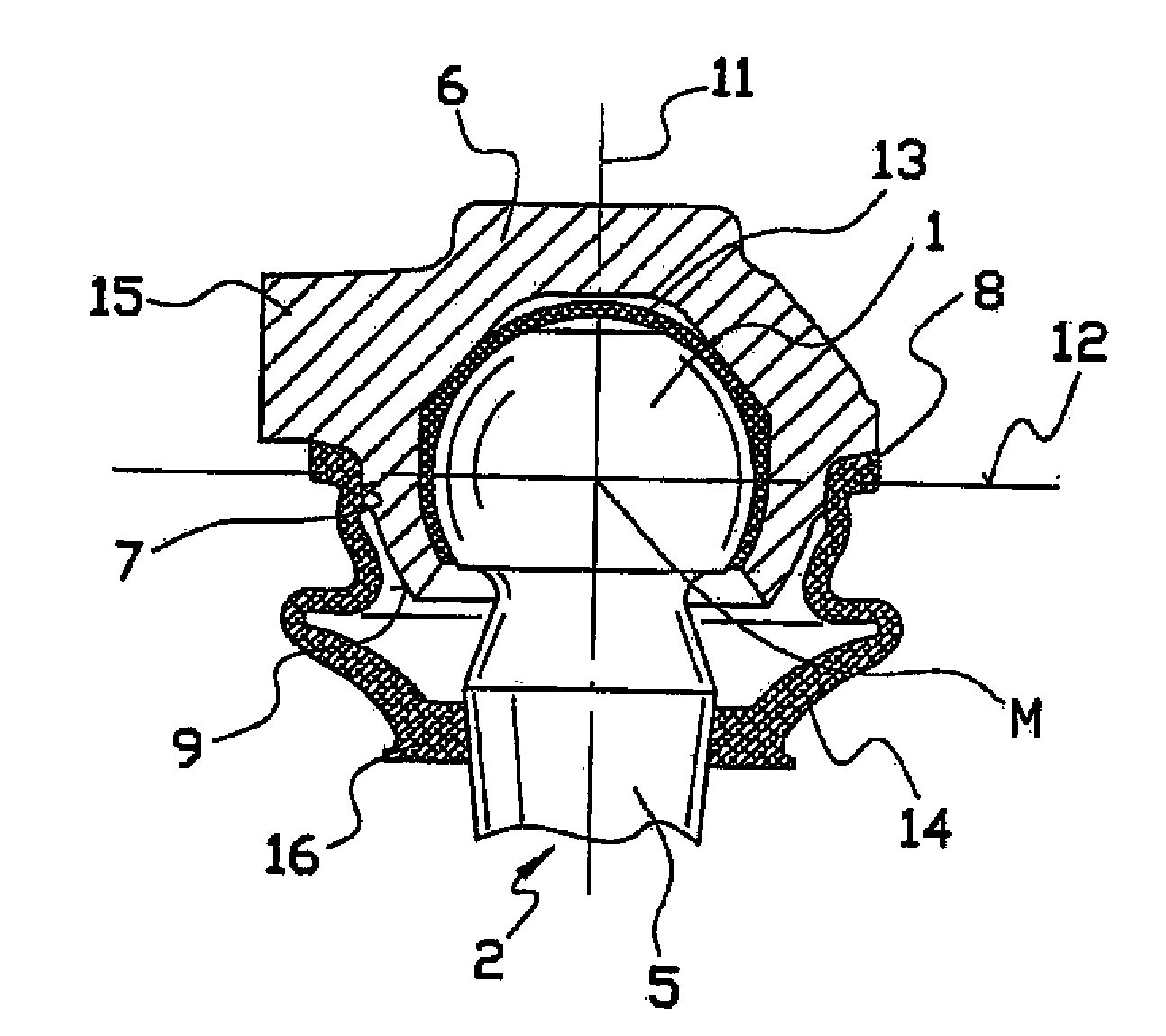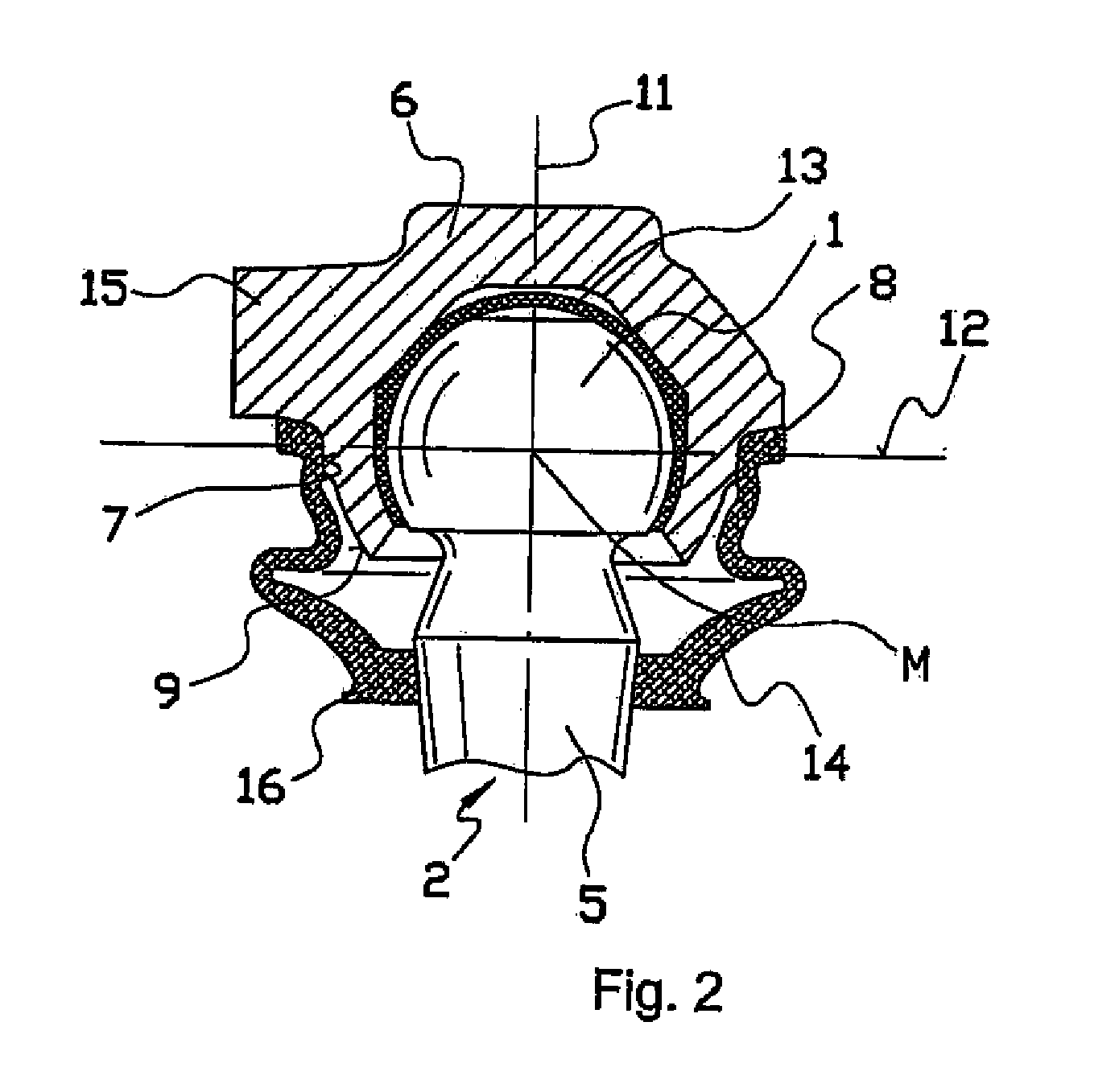Housing for a ball joint
a ball joint and housing technology, applied in the direction of couplings, rod connections, mechanical devices, etc., can solve the problems of moisture and impurities entering the interior of the joint, the sealing bellows edge detachment from the fixed position of the housing, and the deformation of the already deformed section, etc., to achieve the effect of reducing the overall manufacturing process, reducing the risk of slipping, and improving the sealing
- Summary
- Abstract
- Description
- Claims
- Application Information
AI Technical Summary
Benefits of technology
Problems solved by technology
Method used
Image
Examples
Embodiment Construction
[0027]The housing illustrated in FIG. 1 and denoted overall by reference number 6 has a shaft 15 by which the housing 6 can be attached to a corresponding component. In the housing 6, an interior space 3 is present, the configuration of which allows accommodation of the joint ball of a ball journal, and also of a bearing shell supporting this joint ball. The special embodiment of a housing 6 according to the illustration in FIG. 1 is designed as a housing 6 open on one side. Accordingly, the housing 6 has an opening 4. During installation of the ball joint, an assembly comprising the ball journal and the bearing shell placed onto the joint ball of the ball journal, can be introduced through this opening 4 into the housing 6. In the region on the opening side, the housing 6 first has a contact region 7 for the sealing contact of a sealing bellows edge. The contact region 7 is designed in this case as a circular cylindrical contact surface and consequently has a diameter dA. Viewed in...
PUM
 Login to View More
Login to View More Abstract
Description
Claims
Application Information
 Login to View More
Login to View More - R&D
- Intellectual Property
- Life Sciences
- Materials
- Tech Scout
- Unparalleled Data Quality
- Higher Quality Content
- 60% Fewer Hallucinations
Browse by: Latest US Patents, China's latest patents, Technical Efficacy Thesaurus, Application Domain, Technology Topic, Popular Technical Reports.
© 2025 PatSnap. All rights reserved.Legal|Privacy policy|Modern Slavery Act Transparency Statement|Sitemap|About US| Contact US: help@patsnap.com



